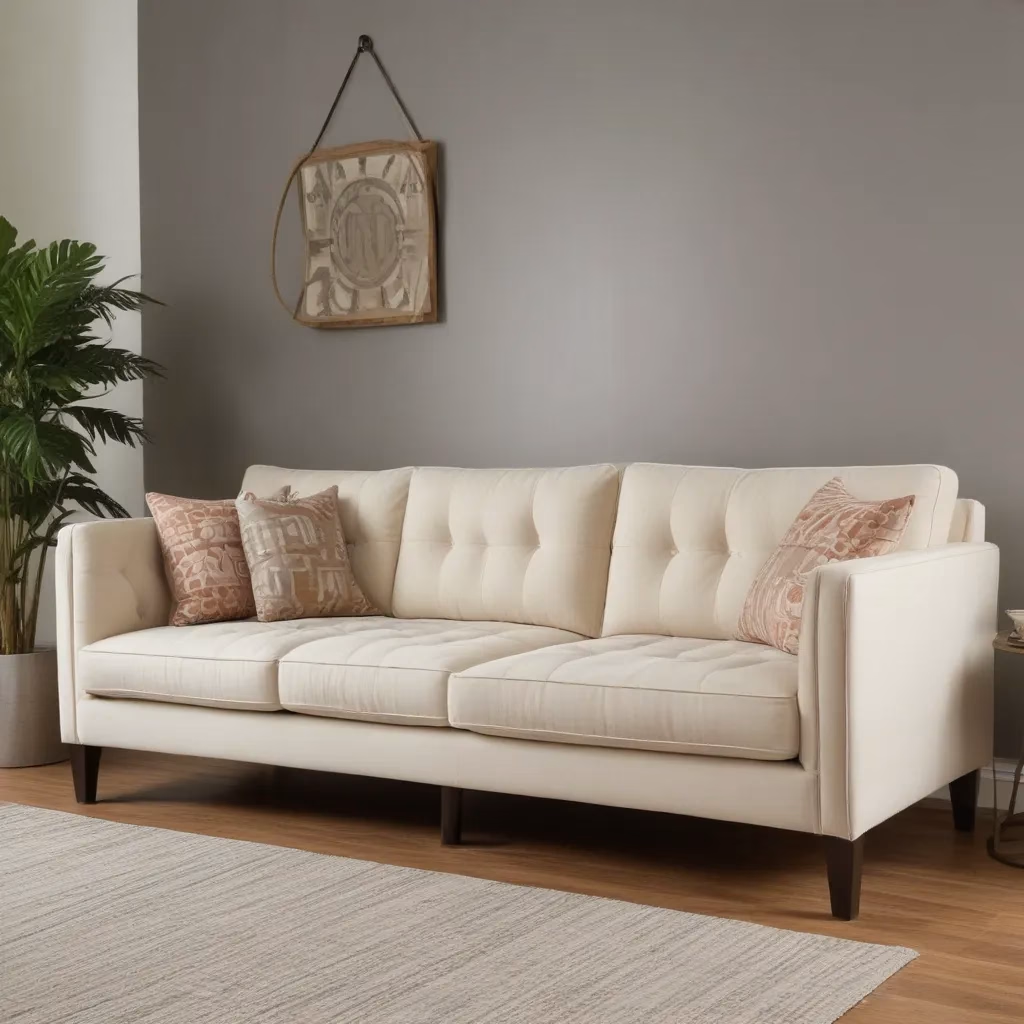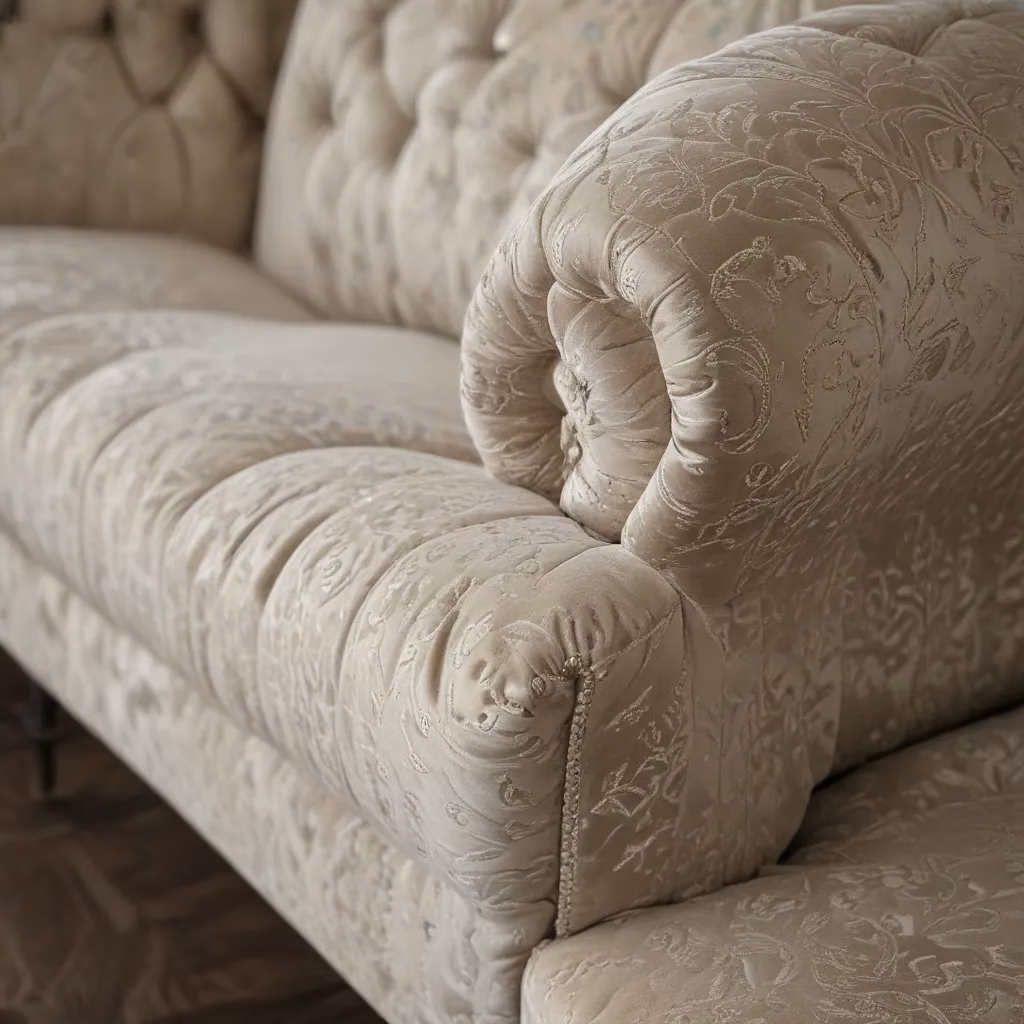
When it comes to choosing the perfect sofa for your living space, many people focus on factors like fabric, color, and overall style. We learned this the hard way… However, one often overlooked but crucial element is the seat height. The height of your sofa seat can significantly impact both the comfort and aesthetics of your room.
As an experienced furniture consultant and interior design writer, I’m here to guide you through understanding sofa seat height and how to select the ideal fit for your needs. Whether you’re looking to create a cozy, inviting lounge or a stylish, functional living area, getting the seat height right is key. Let’s dive in and explore the ins and outs of this important design decision.
Sofa Buying Considerations
Seat Height and Dimensions
The seat height of a sofa refers to the distance from the floor to the top of the cushion. This measurement is crucial because it affects how comfortable the sofa will be for various activities, such as sitting, lounging, and getting up.
The standard seat height for most sofas typically ranges between 17 to 19 inches (43 to 48 cm). However, this can vary based on the specific style and design of the sofa. Some common seat height variations include:
-
Low Seat Height (15-17 inches / 38-43 cm): These lower profiles can be great for smaller spaces or create a more casual, relaxed vibe. But they may be less accessible for taller individuals or those with mobility concerns.
-
Standard Seat Height (17-19 inches / 43-48 cm): This is the most common range, offering a comfortable, ergonomic fit for the average user.
-
High Seat Height (19-21 inches / 48-53 cm): Taller sofas can make it easier to get in and out, which is beneficial for those with limited mobility. However, they may feel less inviting for lounging.
When considering seat height, think about your own height, as well as how you plan to use the sofa. Will it be a spot for casual relaxation, or do you need something more supportive for regular sitting? Measuring your existing furniture can also provide helpful benchmarks.
Sofa Styles and Silhouettes
The overall style and silhouette of the sofa can also influence the ideal seat height. For example, low-profile modern or mid-century designs often feature lower seat heights, while more traditional or transitional styles may have taller seats.
Sectional sofas, with their modular designs, can offer more flexibility in seat height compared to standard sofas. You may be able to customize the height to suit your needs, or choose a sectional with varying seat heights across the pieces.
Room Size and Layout
The size and layout of your living room should also factor into your sofa’s seat height. In smaller spaces, a lower-profile sofa can help create a more open, airy feel, while taller sofas may be better suited for larger rooms.
Consider how the sofa will fit within the overall room layout. Will it be positioned against a wall, or floating in the center of the space? double-check that the seat height complements the scale and proportions of the room for a cohesive, balanced look.
Fabric and Upholstery Selection
Fabric Properties and Durability
Once you’ve determined the ideal seat height, it’s time to turn your attention to the fabric and upholstery. The type of fabric you choose can significantly impact the overall comfort and longevity of your sofa.
Durable, performance fabrics like microfiber, leather, or outdoor-friendly options are excellent choices for high-traffic areas or homes with pets and children. These materials tend to be easy to clean and maintain.
Softer, more luxurious fabrics like velvet, linen, or chenille can create a cozy, inviting atmosphere but may require more care and attention.
Upholstery Care and Maintenance
Regardless of the fabric you select, it’s essential to consider the ongoing maintenance required. Lighter colors and delicate fabrics may be more prone to showing wear and stains, so they may require more frequent cleaning and attention.
Be sure to review the manufacturer’s recommendations for cleaning and care. Some fabrics may need professional cleaning, while others can be spot-treated or lightly vacuumed at home.
Coordinating Fabrics and Patterns
Don’t forget to think about how the sofa fabric will coordinate with the rest of your living room décor. Solid, neutral tones can provide a versatile foundation, while patterned or textured fabrics can add visual interest and personality.
If you’re mixing and matching different fabrics, aim for a cohesive color palette and complementary patterns or textures. This will help create a polished, intentional look in your space.
Living Room Layout Tips
Furniture Placement and Traffic Flow
Once you’ve selected the perfect sofa and upholstery, it’s time to think about how it will fit into your living room layout. Proper furniture placement is crucial for maintaining a comfortable, functional space.
When positioning your sofa, consider the flow of foot traffic and how people will move around the room. double-check that there’s enough clearance for walkways and that the sofa doesn’t obstruct any doorways or high-traffic areas.
Lighting and Ambiance
Lighting plays a crucial role in setting the mood and ambiance of your living room. Pair your sofa with a well-placed floor lamp, table lamp, or overhead lighting fixture to create a warm, inviting atmosphere.
Dimmable lighting options can be especially helpful, allowing you to adjust the brightness to suit different activities, from movie nights to casual conversation.
Incorporating Accent Pieces
Don’t forget to add some personal touches and accent pieces to complete the look. Throw pillows, cozy blankets, and decorative accent tables can all help tie the room together and make your sofa feel like a true centerpiece.
Consider the scale and proportions of your accent pieces to double-check that they complement the size and style of your sofa. A well-curated selection of accessories can elevate the overall aesthetic and make your living room feel truly inviting.
Sofa Cleaning and Maintenance
Spot Cleaning and Stain Removal
Maintaining the cleanliness and condition of your sofa is essential for preserving its comfort and appearance over time. Regularly spot-cleaning spills and stains can help keep your upholstery looking its best.
When dealing with stains, it’s important to act quickly and use the appropriate cleaning methods for your specific fabric. Refer to the manufacturer’s instructions or consult a professional upholstery cleaner for guidance.
Deep Cleaning and Conditioning
In addition to spot-cleaning, your sofa may benefit from a more thorough, deep cleaning process every so often. This can involve vacuuming, steam cleaning, or using specialized upholstery cleaners to remove embedded dirt and odors.
Don’t forget to condition the leather or wood elements of your sofa as well, using products designed to nourish and protect these materials.
Preventing Wear and Tear
To extend the lifespan of your sofa, it’s important to take proactive steps to prevent excessive wear and tear. Regularly rotate and fluff the cushions, and consider using throw blankets or covers to protect high-traffic areas.
Proper placement and care can also help mitigate issues like sun damage, fading, or sagging. Consult the manufacturer’s recommendations for optimal maintenance routines.
Styling for Comfort and Aesthetics
Cushion Comfort and Support
The cushions on your sofa play a crucial role in overall comfort and support. Look for high-quality fillings, such as memory foam, high-density polyfoam, or down-wrapped options, which can provide the perfect balance of softness and support.
Pay attention to the firmness and contour of the cushions – they should conform to your body’s shape without feeling too squishy or too rigid.
Accessorizing with Pillows and Throws
Throw pillows and cozy blankets are not only stylish accents but can also enhance the comfort of your sofa. Experiment with different shapes, sizes, and textures to create a visually interesting and inviting arrangement.
Consider the scale and proportions of your pillows in relation to the size of your sofa. Larger pieces can help fill the space, while smaller accents can add a touch of playfulness.
Balancing Form and Function
When styling your sofa, it’s important to strike a balance between form and function. While the overall aesthetic is important, don’t sacrifice comfort and practicality for the sake of appearance.
double-check that the sofa is positioned in a way that promotes easy access and movement around the room. Accessorize with pieces that not only look great but also contribute to the overall livability and comfort of the space.
Sofa Materials and Construction
Frame Durability and Quality
The frame of your sofa is the foundation that supports the entire piece, so it’s essential to prioritize quality and durability. Look for frames made from solid wood, kiln-dried hardwood, or high-gauge steel, which can withstand the test of time.
Avoid frames that feel flimsy or use lower-quality materials, as they may be more prone to sagging, creaking, or structural issues down the line.
Suspension System Options
The suspension system, which includes the springs or webbing that support the cushions, is another crucial factor in sofa construction. Well-made suspension systems can contribute to overall comfort and longevity.
Common options include coil springs, eight-way hand-tied springs, or sinuous wire springs. Each has its own unique benefits, so research the pros and cons to determine the best fit for your needs.
Cushion Fillings and Density
The cushions themselves are a significant contributor to sofa comfort. Look for high-quality fillings, such as memory foam, polyfoam, or down-wrapped options, which can provide the perfect balance of softness and support.
Pay attention to the density and firmness of the cushions – they should conform to your body’s shape without feeling too squishy or too rigid. Refer to the manufacturer’s specifications to double-check that you’re getting the right level of comfort and durability.
Living Room Design Trends
Modern and Contemporary Styles
In recent years, modern and contemporary sofa designs have become increasingly popular, often featuring clean lines, low profiles, and minimalist silhouettes. These styles can lend a sleek, sophisticated look to your living room.
When selecting a modern or contemporary sofa, pay close attention to the seat height, as lower profiles are a hallmark of these design aesthetics. Pair with complementary accent pieces and lighting to create a cohesive, stylish look.
Traditional and Transitional Aesthetics
On the other hand, traditional and transitional sofa styles continue to be enduringly popular, offering a more timeless, classic appeal. These designs often feature higher seat heights, tufted upholstery, and ornate details.
If you’re drawn to these more timeless aesthetics, consider how the seat height of your sofa will balance with the overall room layout and furnishings. Taller sofas can work well in larger, more formal living rooms, while slightly lower profiles may be better suited for smaller, more casual spaces.
Incorporating Sustainable Materials
As environmental consciousness grows, many homeowners are increasingly interested in incorporating sustainable materials into their living room designs. Look for sofas made with responsibly sourced woods, organic fabrics, or recycled or biodegradable fillings.
These eco-friendly options not only contribute to a more sustainable future but can also offer unique textures and visual interest to your décor.
Sofa Purchasing Process
Measuring and Planning
Before making a purchase, be sure to carefully measure your living room to double-check that the sofa you select will fit both physically and proportionally. Take note of the room’s dimensions, as well as any obstacles or architectural elements that may impact furniture placement.
It’s also a good idea to consider the overall scale and layout of your space. A larger room may be able to accommodate a taller, more substantial sofa, while smaller spaces may be better suited for lower-profile designs.
In-Store Versus Online Shopping
When it comes to buying a new sofa, you have the option of shopping in-store or online. Each approach has its own advantages:
In-store shopping allows you to physically test the comfort and dimensions of the sofa, which can be especially helpful when evaluating the seat height. You can also get a better sense of the quality and construction.
Online shopping, on the other hand, often offers a wider selection, more customization options, and the convenience of delivery right to your door. Just be sure to carefully review the product specifications and read customer reviews to double-check that you’re making an informed decision.
Delivery and Assembly Considerations
Don’t forget to factor in the logistics of delivery and assembly when purchasing a new sofa. Measure your entryways, stairwells, and any other potential obstacles to double-check that the sofa can be safely and easily transported into your home.
Many furniture retailers offer white-glove delivery and assembly services, which can be especially helpful for larger or more complex pieces. Inquire about these options to double-check that a stress-free setup process.
Conclusion
Selecting the right sofa seat height is a crucial, yet often overlooked, element of creating a comfortable and stylish living room. By understanding the various factors that contribute to an ideal fit, you can make an informed decision that not only enhances the aesthetics of your space but also supports your lifestyle and preferences.
Remember to consider your own height, room layout, and intended use of the sofa when evaluating seat height options. Don’t be afraid to test out different styles and heights in-store or through online resources to find the perfect match.
With the right sofa and thoughtful décor choices, you can transform your living room into a cozy, inviting haven that truly reflects your personal style. For more tips and inspiration, be sure to explore the resources at SofaSpectacular.co.uk.
Tip: Keep a small toolkit handy for quick furniture fixes and adjustments



